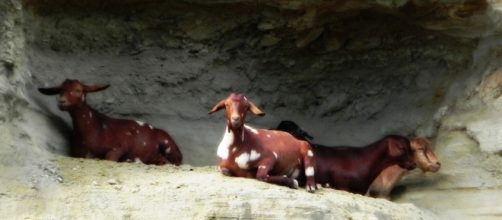The Washington Post reported on the excessive temperatures recorded in October this year.
The records show that for the “first time” we experienced a warmer in excess of one degree Celsius. Records date back to 1880.
October was the hottest month, but trends indicate that the entire year is on track to break all records. According to NASA and other weather services, the one-degree increase in temperature means we are half way to the two-degree mark. At two degrees, the world could be at the internationally accepted range limit. After that, we will not be able to avoid all the predicted bad “consequences of climate change.”
World heating is caused by greenhouse gasses, which despite worldwide efforts pour relentlessly into our atmosphere.
This year’s El Niño is reaching record levels and is helping to boost temperatures upward.
NOAA forecasters said that this year’s El Nino is so strong it could affect the Pacific jet stream. PhysorgNews explain on their website, that El Nino warms up tropical oceans; the result is more water vapor in the atmosphere. This water has evaporated from the warm ocean surface. This warm vapor, which is known as "latent heating of condensation" increases the temperature of the air. In October, it was predicted that El Nino will result in a very warm 2016.
Global warming occurs when the levels of carbon increase in the atmosphere. Excessive logging and forest clearing contribute to the problem, and depleting ozone layers are of particular concern.
The adverse effects of global warming include potentially catastrophic weather conditions. There are concerns regarding a rising ocean, which will affect living space and the ability of communities that rely on the sustainable harvest of ocean resources to feed themselves. Food production in parts of the world could plummet by up to 15%.
Health risks include the spread of disease and pollution. Global warming can pose a threat to global natural environments.
The Earth Hour organization, which is part of the World Wide Fund for Nature initiative, is attempting to educate people about the effects of global warming and what can be done to address the problem. Their movement has grown to the point where it is one of the largest “grassroots movements” for the protection of the environment.
In 2010, Raymond Pierrehumbert, of the Climate Systems Center in Chicago aid, "The warmer you get, the more bad stuff can happen.”
In 2015, we are potentially sitting at the half way mark to disaster.
ENVIRONMENT IS THE SILENT CASUALTY OF ARMED CONFLICT IN THE DEMOCRATIC REPUBLIC OF CONGO
THE CONSPICUOUS ABSENCE OF TANZANIA FROM THE COTONOU RESOLUTION TO BAN ELEPHANT TRADE

